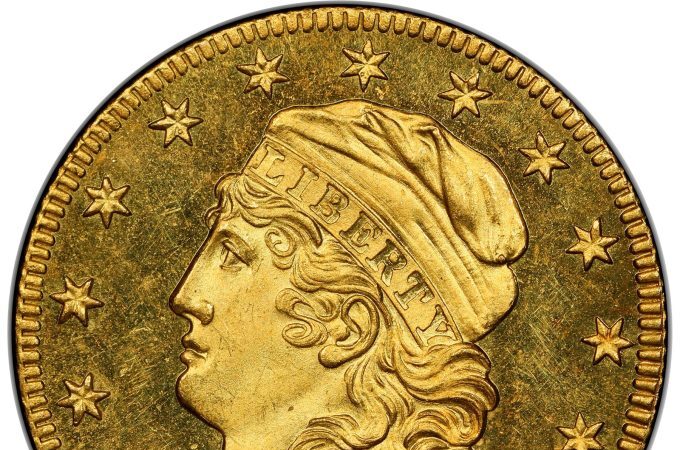
One of just two known proofs of an 1829 Half Eagle Large Diameter, Large Date, BD-1, R.7, PR66+ PCGS. JD-1, R.8 as a Proof drew 56 bids on its way to a record $2.88 million to lead Heritage Auctions’ Central States Numismatic Society US Coins Signature® Auction to $46,206,006 May 3-7.
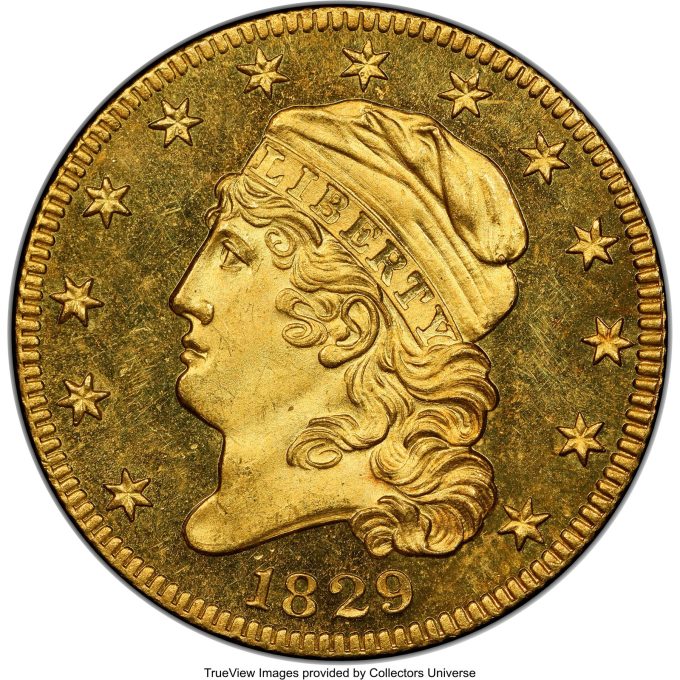
When added to the $9,164,164 result from Heritage’s CSNS World Coins Platinum Session and Signature® Auction and the $5,741,447 total from the May 3-5 CSNS US Currency Signature® Auction, the combined total for the three events soared to $61,111,617.
The 1829 half eagle was the top lot from The Harry W. Bass, Jr. Core Collection, Part III, from which proceeds will benefit dozens of Dallas-based nonprofits supported by the Harry W. Bass Jr. Foundation, with an emphasis on early childhood education and literacy in Dallas. Part III generated nearly $18.15 million and produced the event’s top three results. The $2.88 million result for the 1829 half eagle – one of more than 30 records set in the event – more than doubled the previous mark of $1.38 million.
“Pair the exceptional lots in these auctions with shrewd collectors looking to strengthen their collection with the best coins and banknotes available, and these are the types of results that can be expected,” says Todd Imhof, Executive Vice President at Heritage Auctions. “The Bass Collection that produced more than 100 lots in this auction is an important trove of elite coins that has generated more than $62.6 million for Dallas nonprofits. We could not be more proud of the results and the benefits the Dallas community will enjoy from the proceeds.”
Another record fell when an 1824/1 Quarter Eagle BD-1, R.5, PR67 PCGS. JD-1, R.8 as a Proof, also from the Bass collection, sparked more than three dozen bids before ending at $1.74 million. It is the only proof in private hands and the only proof example certified by either of the leading grading services, and one of only two confirmed specimens; the other is included in the National Numismatic Collection at the Smithsonian Institution, forever out of reach of collectors.

A 1908 Eagle Roman Finish PR65 PCGS. CAC also brought in nearly three dozen bids before it sold for $750,000 – obliterating the previous record of just $7,500. It is one of just two Roman Finish proof eagles; based on two similar double eagles, which were the result of the Mint experimenting and altering finishes on proof gold coins during the early years of production of Saint-Gaudens’ new designs, it is possible that the eagles came about in the same way. Or, according to research done by Roger Burdette on the double eagles known of the same date and with the same finish, they might also have been “defective proofs produced while the medal department was striking the … proof double eagles for 1908.”
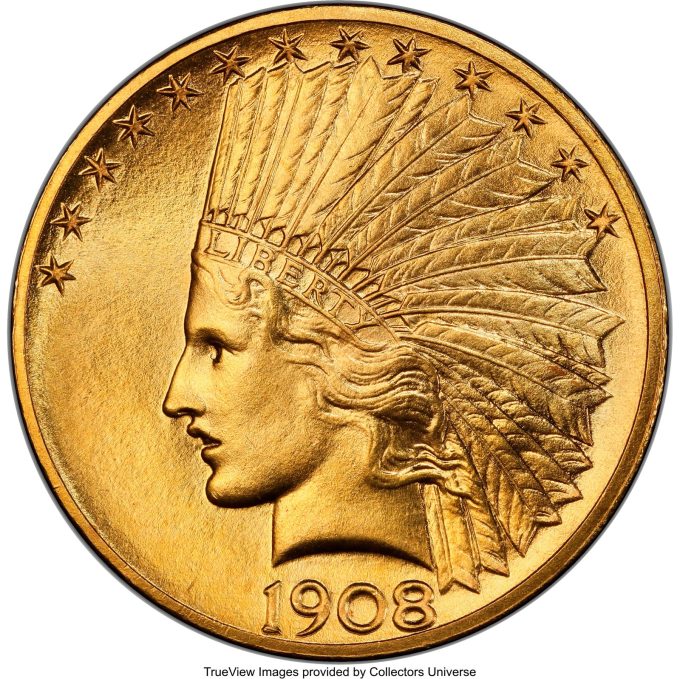
The highest-graded 1831 Quarter Eagle BD-1, R.4, PR67 Cameo PCGS. JD-1, R.7 as a Proof sold for a record $630,000, which erased the previous record of $168,000. Few surviving proofs are known for the quarter eagles struck prior to the Classic Head type in 1834, and there is some disagreement regarding the number of survivors. John W. Dannreuther itemizes 32 proofs including nine for 1831; seven of the 32 proofs are held in the Smithsonian Institution.
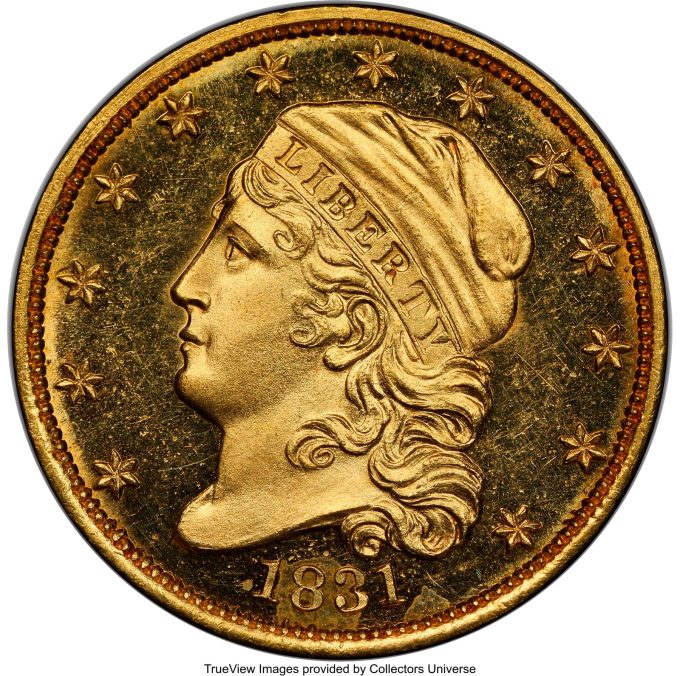
The top result for a coin that did not emerge from the Bass Collection was for an 1801 50C O-102, T-1, R.4, MS64 NGC. CAC that brought $420,000. The 1801 O-102 die marriage survives to the extent of about 100 coins, nearly all of which are circulated examples; this is one of just two Mint State examples known to Heritage Auctions. It is possible that three or four Mint State examples of the 1801 O-101 still exist; the finest of those to appear in any recent auctions grades MS63.
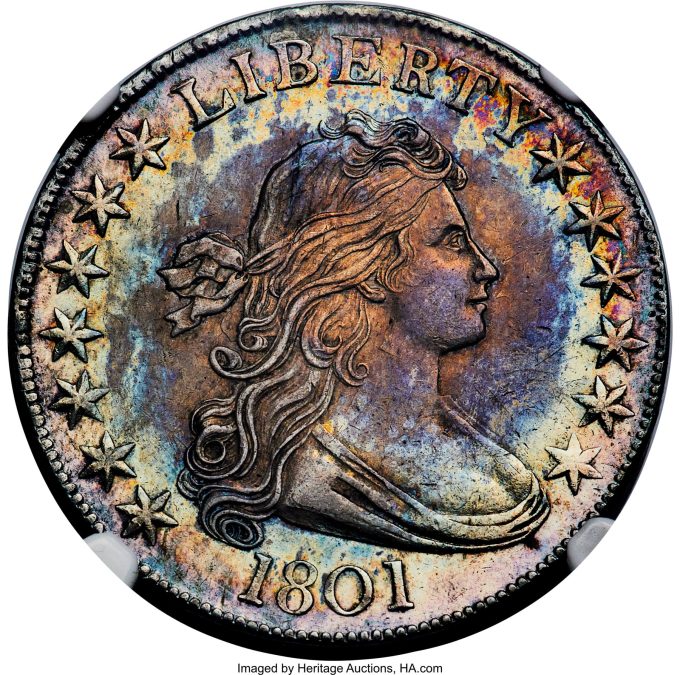
Complete results from the US Coins Signature® Auction can be found at HA.com/1359.
World Coins
Leading the World Coins event was one of the elite coins from the prestigious Hunt Collection, a coin considered the most historically important of all ancient coins. The Marcus Junius Brutus, Assassin of Caesar and Imperator (44-42 BC), with L. Plaetorius Cestianus, as Magistrate. AR denarius (19mm, 3.72 gm, 12h). NGC XF 5/5 – 4/5, Fine Style, the only certified example ever to come to auction that has received a Fine Style designation from NGC, drew a winning bid of $720,000 – smashing the record for an Eid Mar denarius.
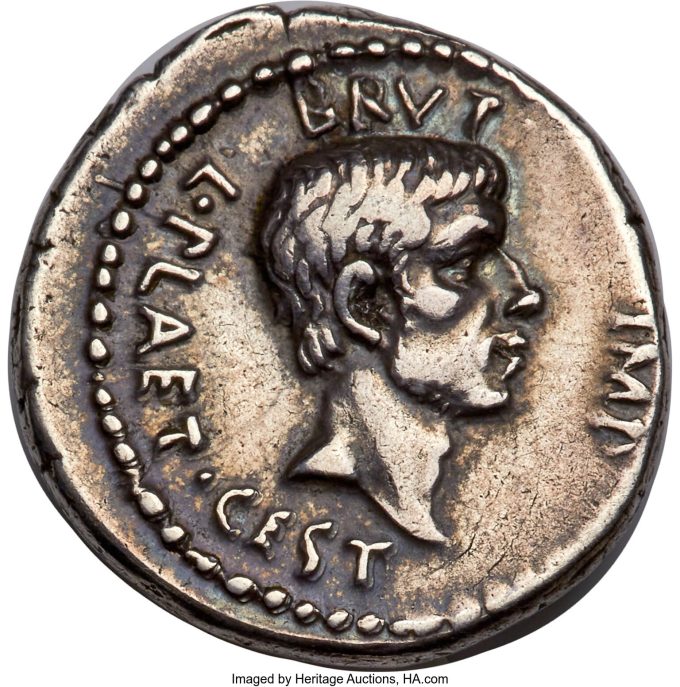
The previous record was set when Heritage Auctions sold this same coin in 2011 for $546,250.
“This is a historically important coin,” says Cris Bierrenbach, Executive Vice President of International Numismatics at Heritage Auctions. “While other coins acknowledge significant historical acts or specific leaders, this one celebrated an act of murder – a distinction that separates it from all other Roman coins.”
Another record setter was a LYDIAN KINGDOM. Croesus (561-546 BC). AV stater (17mm, 10.77 gm). NGC MS![]() 5/5 – 5/5, which set a new standard for a Croesus heavy stater when it sold for $192,000. This magnificent coin is an exceptionally well-struck example from the series that can be called the “world’s first major gold coinage.” The Lydian kingdom and several Greek city states of Asia Minor previously had struck coins in electrum, a natural alloy of gold and silver, but the accession of Croesus to the Lydian throne, circa 561 BC, brought with it a revolution in the world economy.
5/5 – 5/5, which set a new standard for a Croesus heavy stater when it sold for $192,000. This magnificent coin is an exceptionally well-struck example from the series that can be called the “world’s first major gold coinage.” The Lydian kingdom and several Greek city states of Asia Minor previously had struck coins in electrum, a natural alloy of gold and silver, but the accession of Croesus to the Lydian throne, circa 561 BC, brought with it a revolution in the world economy.
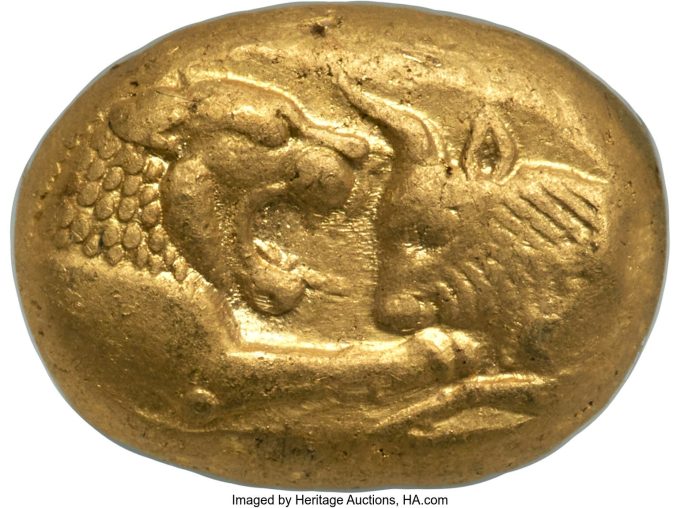
A Great Britain: Victoria Proof “Gothic” Crown 1847 PR64 Cameo NGC continued the streak of top coins setting new records when it sold for $186,000 – more than six times the pre-auction estimate and a new record for a Gothic Crown. A spectacular example of this rare subvariety, it is among the finest of the surprisingly few seen on the auction market in recent years.
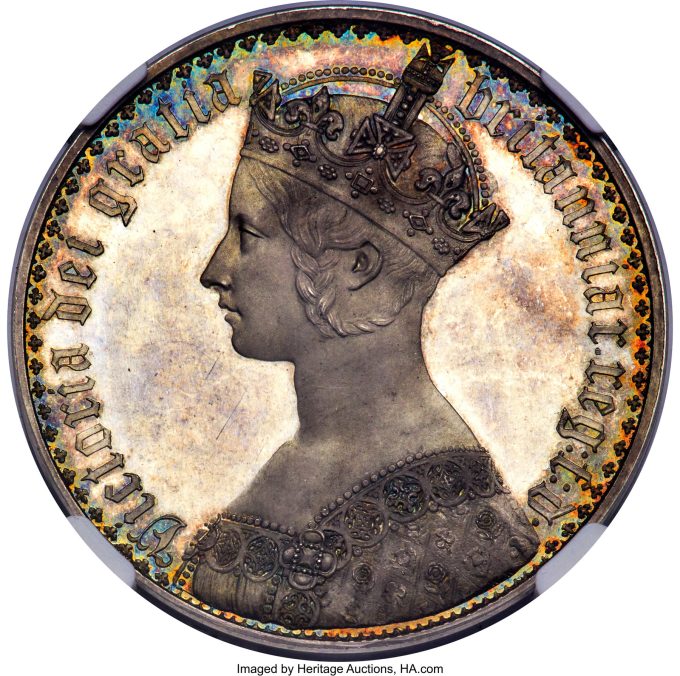
More than a dozen bids poured in for a SICILY. Syracuse. Unsigned dies by Kimon, ca. 405-400 BC. AR decadrachm (40mm, 43.21 gm, 9h). NGC Choice XF![]() 4/5 – 5/5, Fine Style before it closed at $180,000. It is part of the series of silver decadrachms by Kimon and Euainetos that were struck in considerable numbers, likely to pay the Greek mercenary soldiers who flooded Sicily to fight the expanding power of Carthage.
4/5 – 5/5, Fine Style before it closed at $180,000. It is part of the series of silver decadrachms by Kimon and Euainetos that were struck in considerable numbers, likely to pay the Greek mercenary soldiers who flooded Sicily to fight the expanding power of Carthage.

An IONIA. Uncertain mint. Ca. 650-600 BC. EL stater (20mm, 14.38 gm). NGC Choice AU 5/5 – 5/5 nearly doubled its low pre-auction estimate when it ended at $120,000. In his book, Electrum and the Invention of Coinage (Dennis McMillan, 2011), author Joe Linzalone presents a convincing case that this magnificent coin should be considered the first true coin type ever struck. Pre-weighed lumps of electrum had been employed as a medium of exchange for some years before this issue, but they lacked anything that could be called an obverse “type” or design – an addition Aristotle said was the decisive step to converting bullion into coinage.

A brilliant George VI gold Proof 5 Pounds 1937 PR66+ Deep Cameo PCGS, KM861, S-4074 almost reached twice its high pre-auction estimate when it climbed to $99,000 – a record for a 1937 5 Pounds. It would be exceedingly difficult to acquire an example finer than this one, a conditionally superb representative featuring delightfully Gem open expanses and opulent frosting on the King’s portrait.
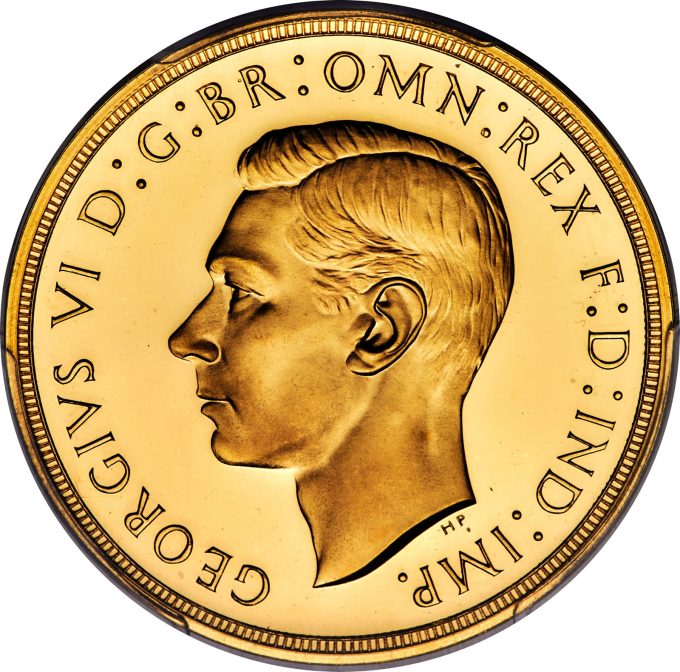
Complete results for the World Coins Platinum Session and Signature® Auction can be found at HA.com/3107.
U.S. Currency
Results soared in the U.S. Currency Signature® Auction, with no lot sparking more of an appetite among collectors than a Fr. 377 $100 1890 Treasury Note PCGS Banknote About Unc 50 Details that led the event at $264,000.
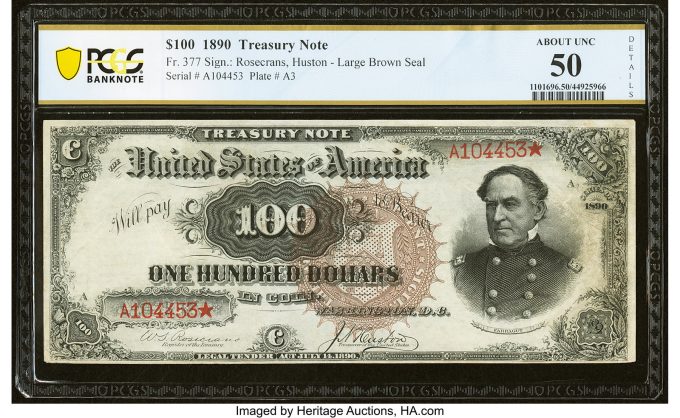
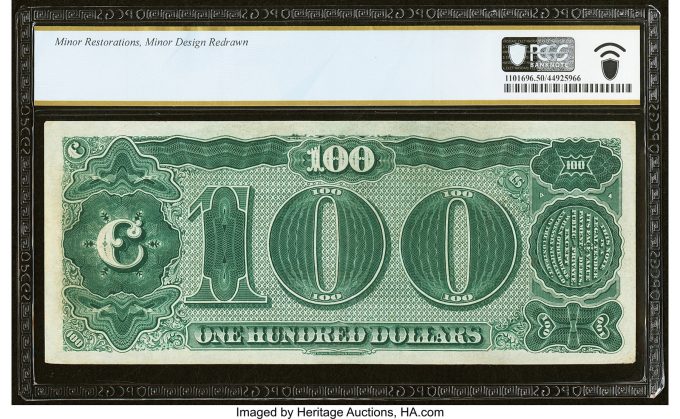
Known as the “Watermelon $100” because of the immediately identifiable design on the reverse, in which the zeroes resemble the large popular fruit, the example sold in this auction is the second-finest sold at auction in the last 15 years.
“Watermelon notes are extremely popular among collectors of all levels, and demand for Watermelon $100s reaches an entirely different level because of their rarity,” said Dustin Johnston, Vice President of Numismatics at Heritage Auctions. “Remember, there are just 35 examples known, eight of which are off limits to collectors because they are government held, which only increases the rarity. So a note like this one is an absolute must-have treasure for any serious collector.
An exceptionally rare Wailuku $5 Brown Back, one of just four notes – all $5 Brown Backs – reported from this short-lived issuer, drew a winning bid of $132,000. This example is the first of the foursome to make a public appearance since the note in the J. L. Irish collection sold at auction in 1997.

Also reaching six figures was a Fr. 1072a $100 1914 Red Seal Federal Reserve Note Cut Sheet of Four PMG Choice Uncirculated 64, which reached $102,000. According to Track & Price census, there are 25 notes known for Fr. 1072a. These notes belong to the only cut sheet extant from a run of 16 consecutive notes discovered more than 30 years ago and now are widely distributed among collectors looking for just a single example for their high-end type sets.
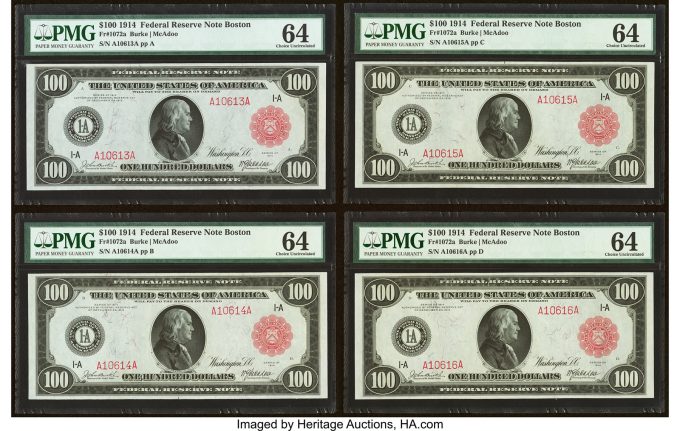
Among the top lots in the auction, and leading the Baton Rouge Bassett Collection, was a Serial Number 1 Starkville, MS – $5 1882 Brown Back Fr. 469 The First National Bank Ch. # 3688 PMG Very Fine 30 that raced past its pre-auction estimate when it ended at $57,600. A rare type for the Magnolia State, this example is the only serial number 1 Brown Back from the state and hails from the only bank in this central Mississippi location, an institution that issued just $5 Brown Backs during its brief existence from 1887 until its failure in 1893, leaving a mere $290 outstanding in 1916.
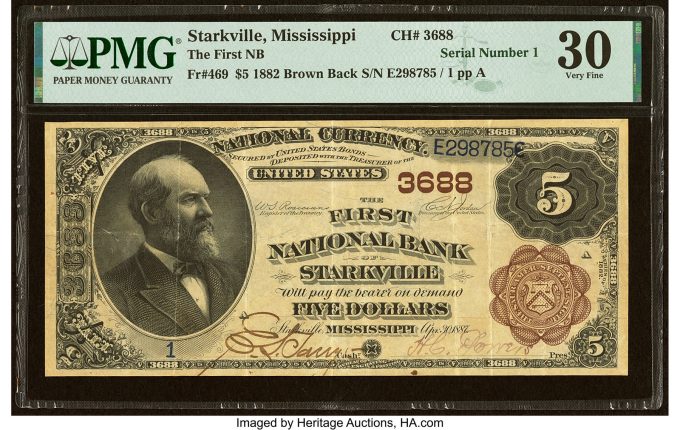
An exceptionally rare and important War of 1812 treasury note, the Fr. TN-6 Kagin TN-6a Hessler X74C $100 Act of March 4, 1814 Treasury Note Double Signature Remainder PMG Choice Extremely Fine 45, drew 20 bids until it finished at $48,000 – nearly twice its pre-auction estimate. The $100 is the only denomination known from the Act of March 4, 1814, and this example is one of only three complete double signature remainders enumerated along with a reported half note double signature remainder as listed on page 33 of Treasury Notes of the War of 1812 by Donald H. Kagin, Phd. The other two are recorded as plate notes and presumably tightly held.

Also reaching $48,000 was a Fr. 165a $100 1862 Legal Tender PMG Choice Fine 15, a very rare example of one of the great rarities in United States currency that was sold at auction for the first time. According to the Track & Price census, this note is one of just 11 examples of Fr. 165a in all grades combined.
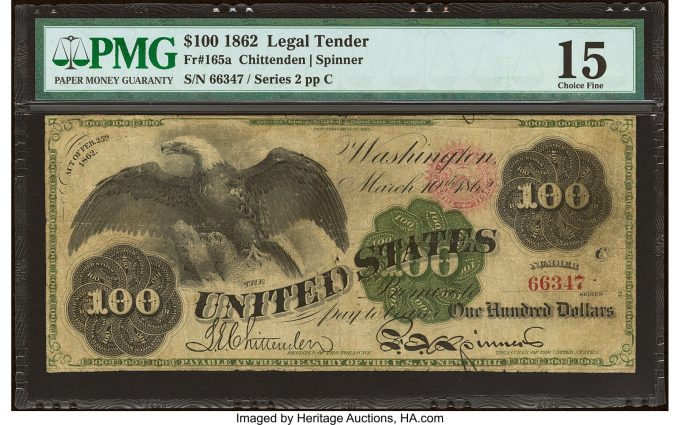
Complete results for the US Currency Signature® Auction can be found at HA.com/3592.
About Heritage Auctions
Heritage Auctions is the largest fine art and collectibles auction house founded in the United States, and the world’s largest collectibles auctioneer. Heritage maintains offices in New York, Dallas, Beverly Hills, Chicago, Palm Beach, London, Paris, Geneva, Amsterdam, Brussels and Hong Kong.
Heritage also enjoys the highest Online traffic and dollar volume of any auction house on earth (source: SimilarWeb and Hiscox Report). The Internet’s most popular auction-house website, HA.com, has more than 1,600,000 registered bidder-members and searchable free archives of more than 6,000,000 past auction records with prices realized, descriptions and enlargeable photos. Reproduction rights routinely granted to media for photo credit.



